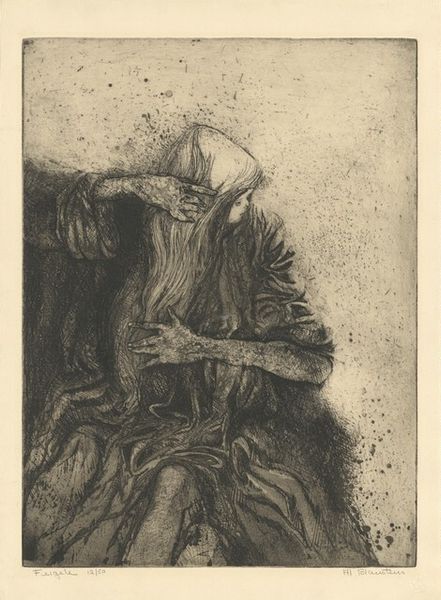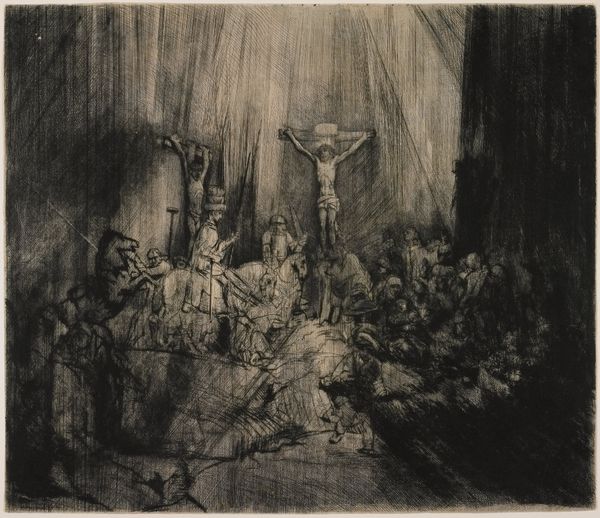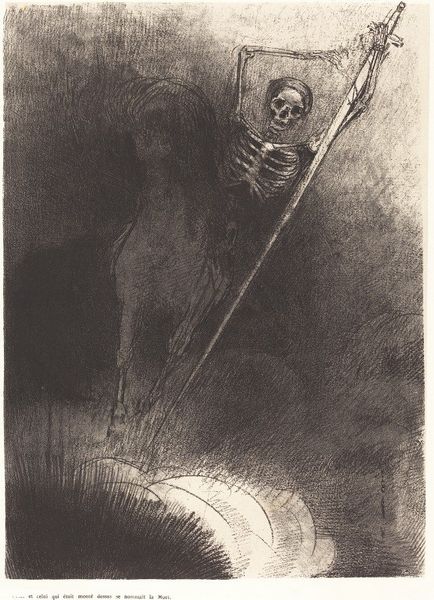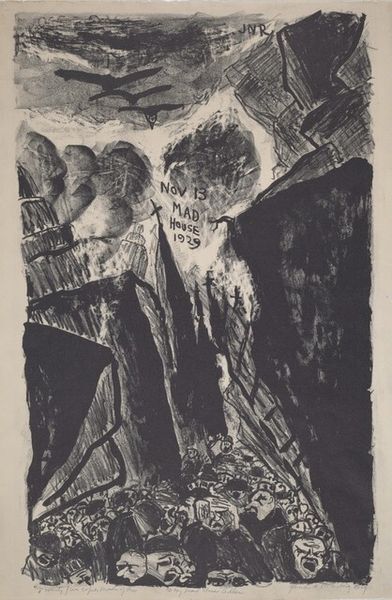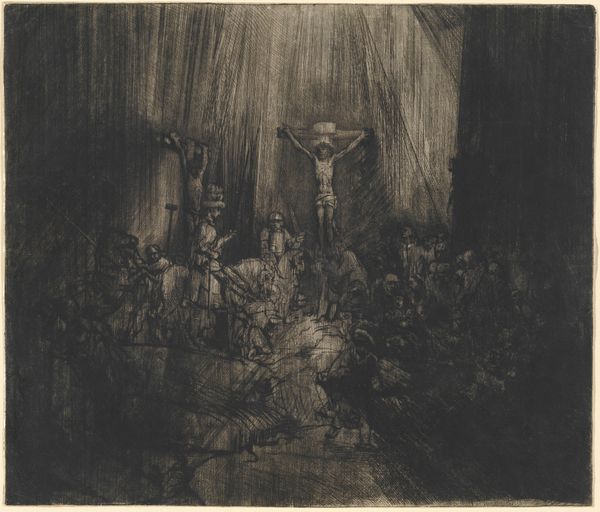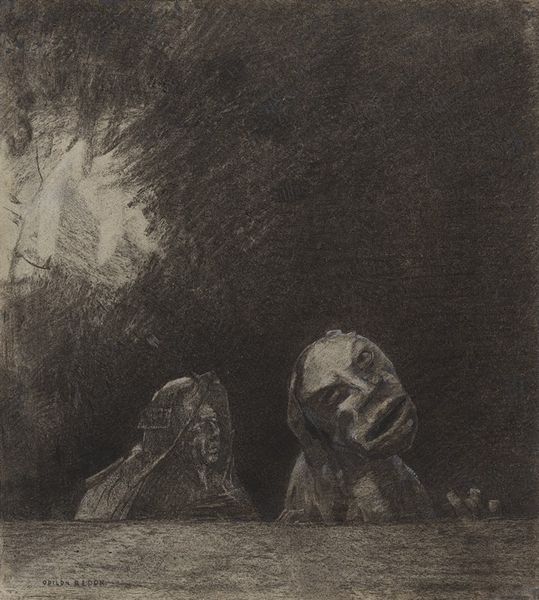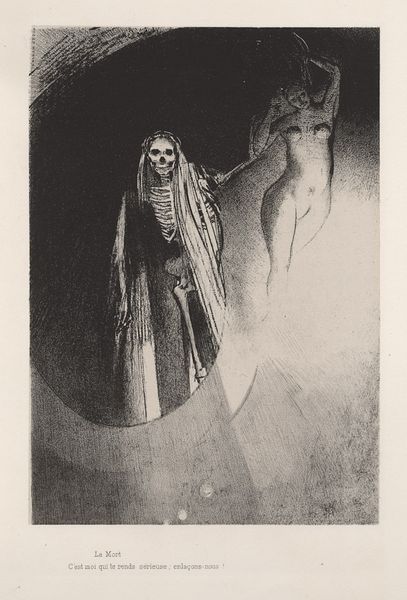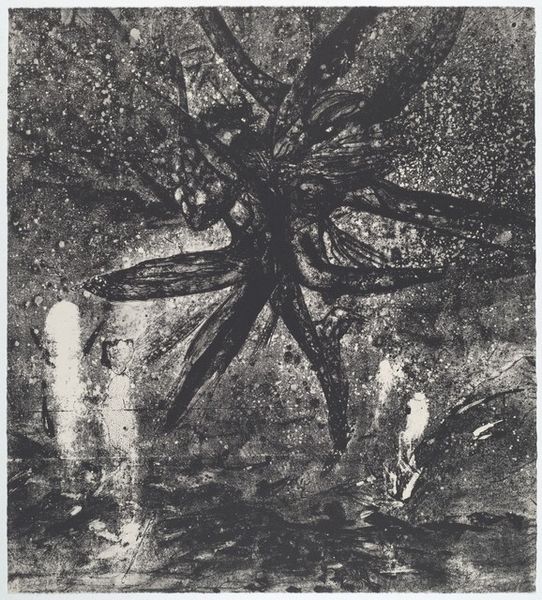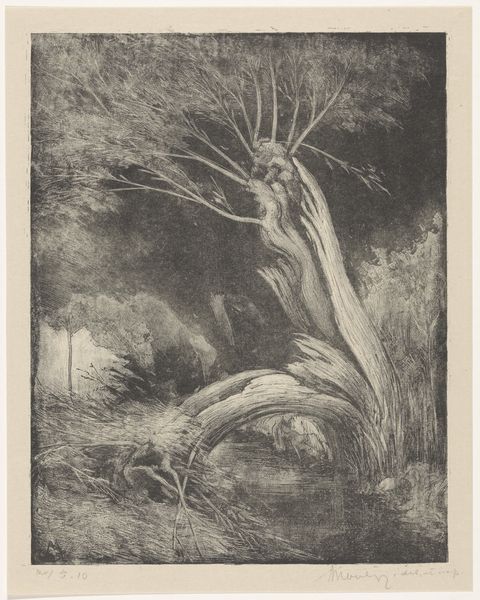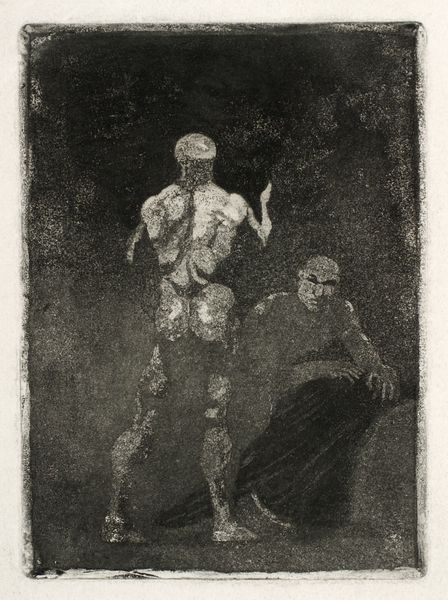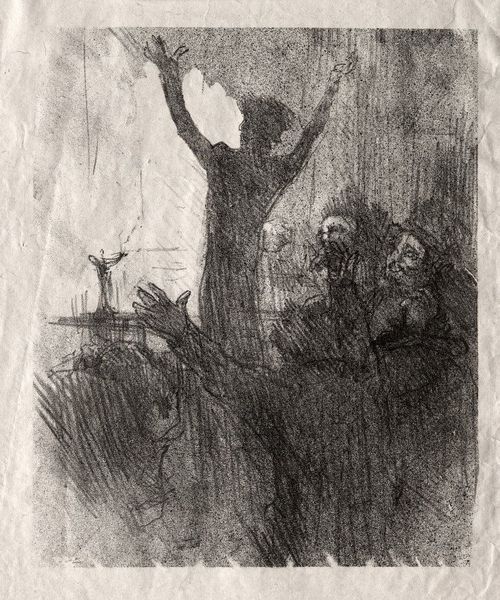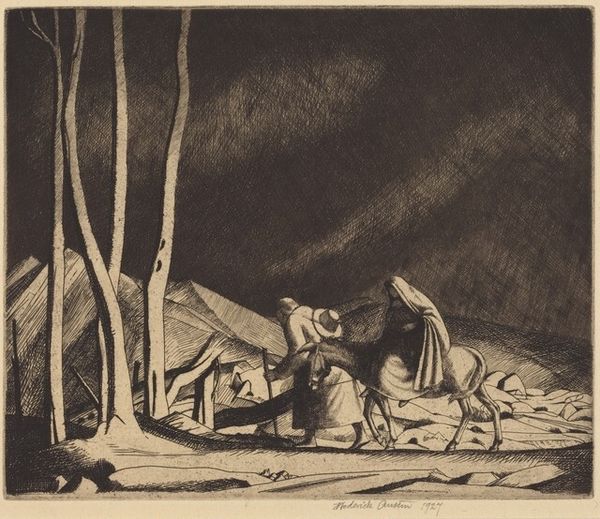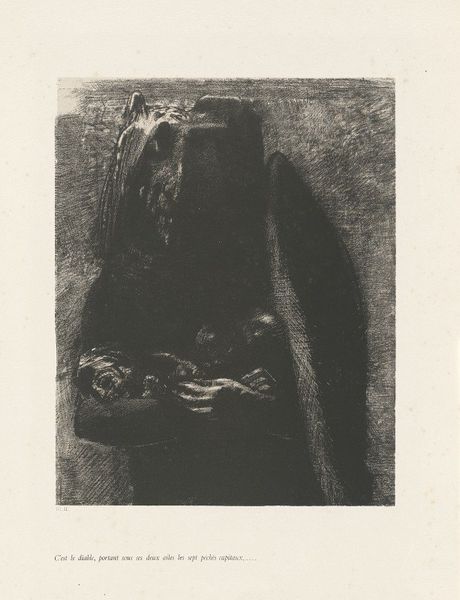
drawing, print, etching
#
drawing
# print
#
etching
#
landscape
#
figuration
#
realism
Copyright: National Gallery of Art: CC0 1.0
Curator: This etching from 1931 is entitled "Returning from the Fields" by Earl Stetson Crawford. Editor: It’s stark. The way the artist rendered those two figures almost melts them into the landscape itself, giving them an undeniably melancholic presence. Curator: Yes, the tonal range achieved through the etching process—the varying depths of the lines—contributes greatly. Looking at their garments and tools, it's apparent their attire signifies agricultural labor; it reminds us of rural life during that era. The lines almost vibrate with texture. Editor: The tools, the rakes, and even the sickle—these are ancient symbols, deeply rooted in agrarian societies, almost biblical. You see similar implements represented in art throughout centuries. Their use speaks to the cycle of harvest, toil, and perhaps even the promise of provision. They have stood as totems of survival in a life in nature. Curator: Considering the era, the Great Depression, it becomes clearer what Crawford may have wanted to capture in this portrait. Through the repetitive mark-making and the printed form of the work itself, the figures acquire this reproducible, labor-oriented essence. The work becomes representative, a means to capture the economic struggles, and hardships they had to overcome to keep providing. Editor: Right, their bowed heads evoke exhaustion but also a deep connection to the earth, to tradition. They become archetypes. It also gives me the sense of enduring the harsh conditions of both nature and, as you pointed out, an era. The overcast, ashy sky even looks grim, bearing down with the weight of their hardship, almost ominous in its emotional charge. Curator: Precisely! I believe the beauty lies in its visual texture and in revealing what processes of hard work mean and look like, making it feel heavy both in theme and the etching labor itself. It challenges conventional notions of artistic value, turning towards the real experience of everyday folk through craft. Editor: Well, it made me think of mortality, of the persistent themes of labor and sustenance within the human condition. There is definitely much to appreciate about the symbolic charge Crawford infused into such a seemingly simple depiction.
Comments
No comments
Be the first to comment and join the conversation on the ultimate creative platform.
